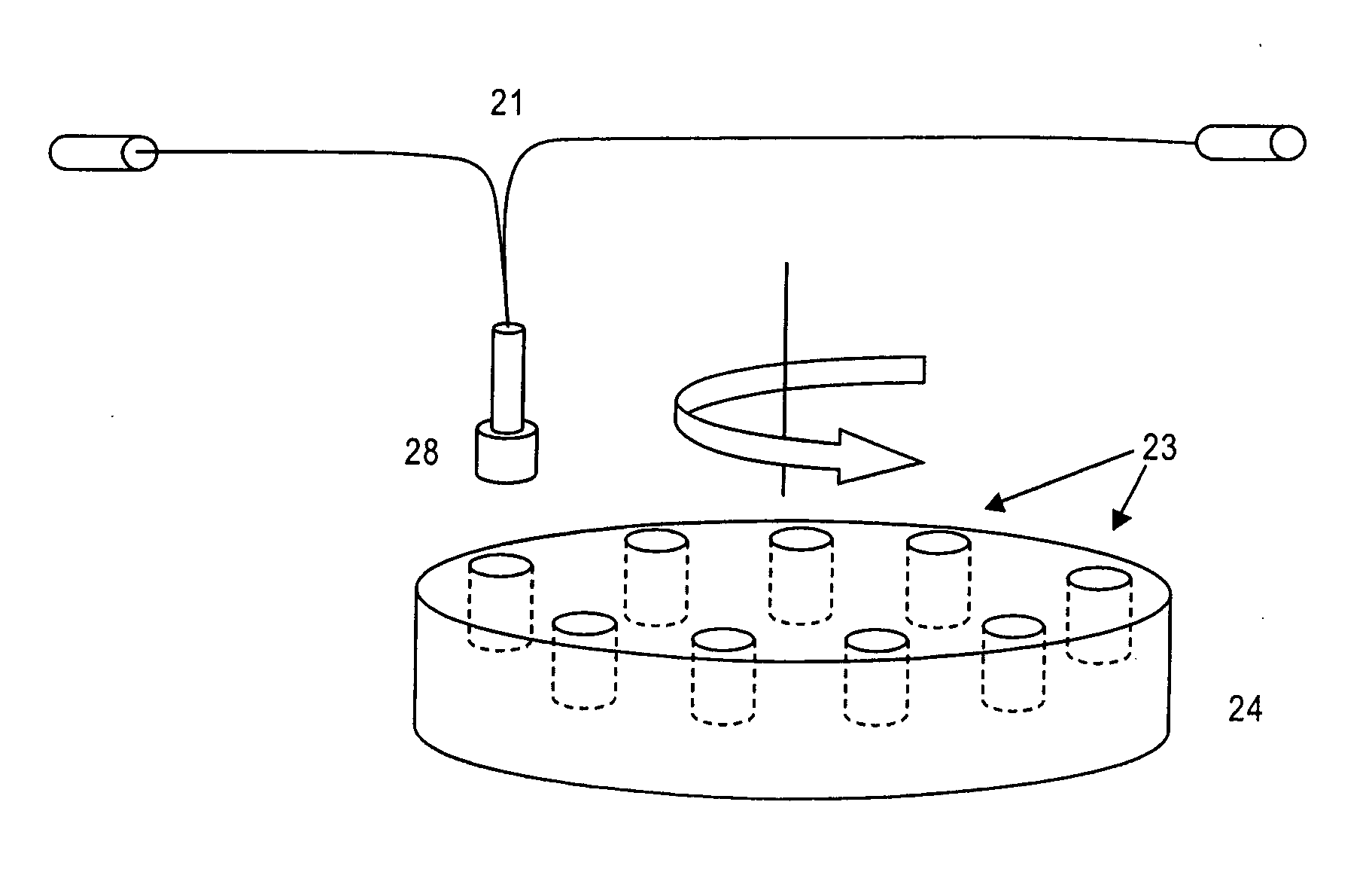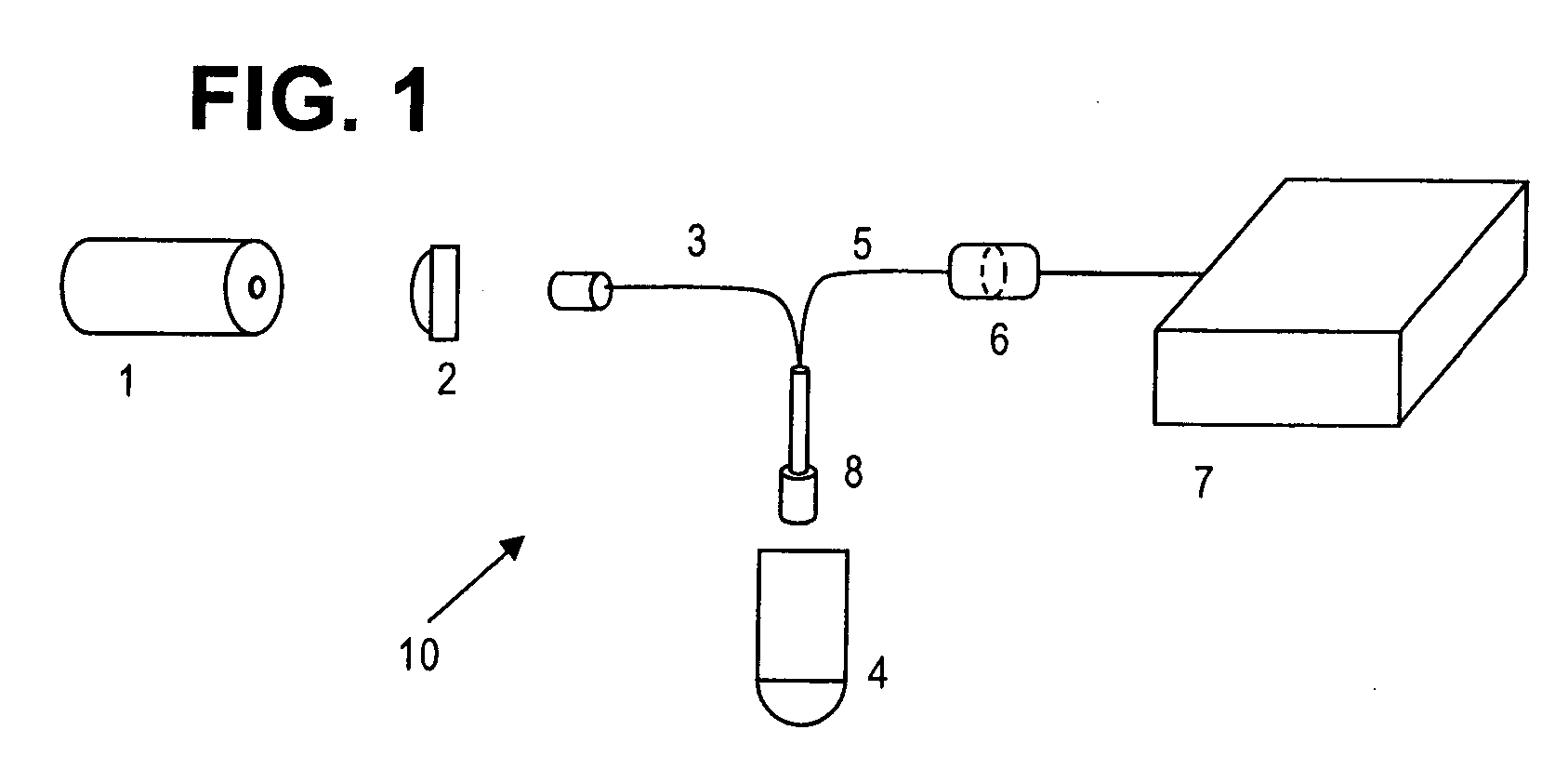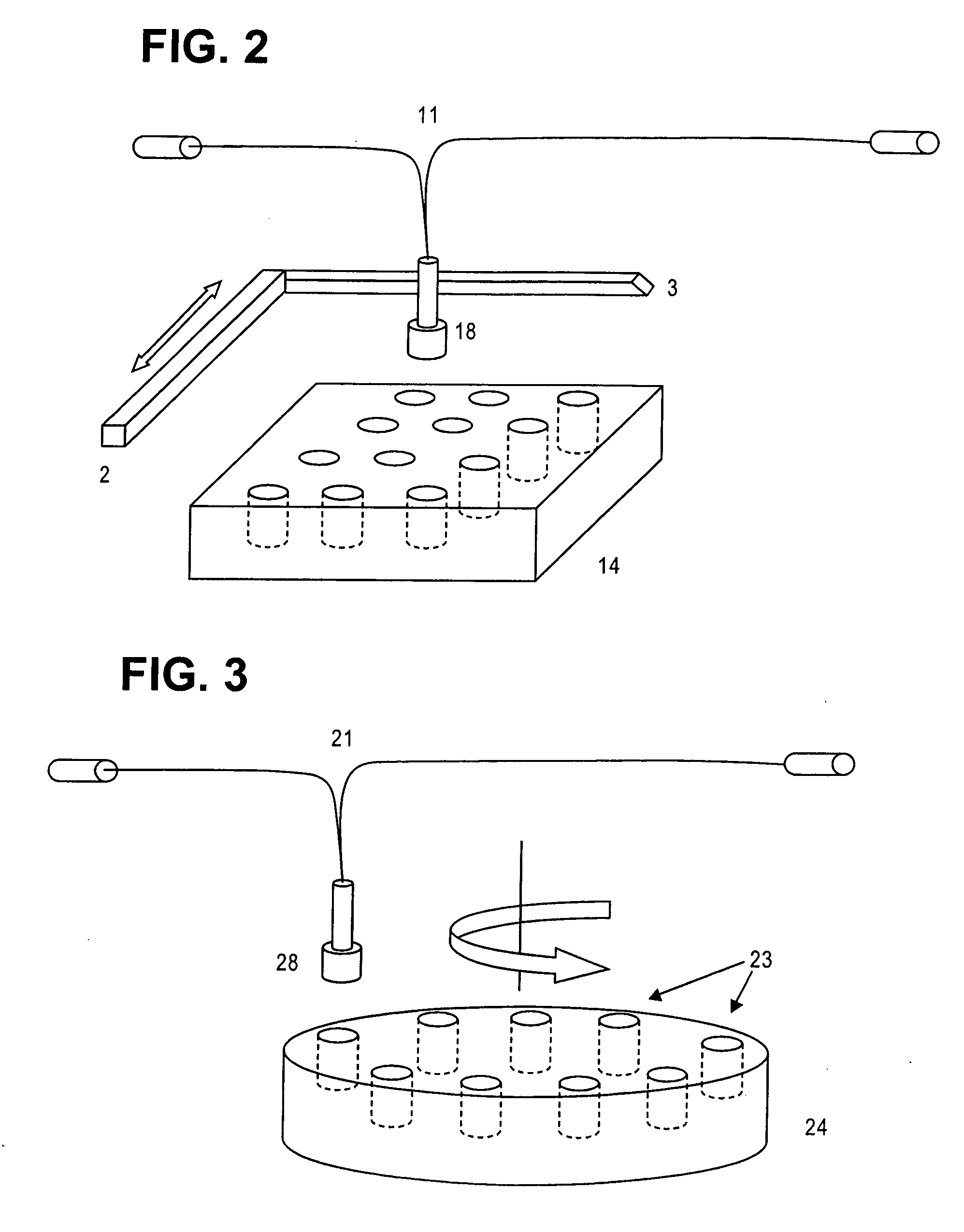Analytical multi-spectral optical detection system
- Summary
- Abstract
- Description
- Claims
- Application Information
AI Technical Summary
Benefits of technology
Problems solved by technology
Method used
Image
Examples
example
[0067] Fluorescent analysis data obtained from a prototype optical system according to the present invention.
[0068] System Components Include:
Light SourcePartCenterTemperatureRMSPowerLaserDescriptionVendornumberWavelengthPowerControlNoiseStabilityClassDiodeCNIMBL-II473 nm10 mWThermoelectric Class IIIbPumpedOptoelectronicsLaserTech. Co., Ltd,Changchun, ChinaDiodeWorld Star Tech,TECGL-532 nm10 mWThermoelectricClass IIIbPumpedToronto, ON,10LaserCanadaDiode LaserWorld Star TechTECRL-635 nm10 mWThermoelectricClass IIIb10G-635Detector OpticsLaser LineDescriptionVendorPart numberCenter WavelengthBlockingTransmissionTriple NotchSemrock,NF01-488 / 532 / 635-8-D488 nm, 532 nm8 O.D.>95%Laser Line FilterRochester633 nmNYDetectorGratingPartGrooveDescriptionVendornumberOptical DesignDetectorDensitySlit WidthSpecialDiffractionOceanHR2000Czerny-TurnerSony ILX511600 lines200 umSilverGradientOptics,2048-elementper inchCoatedSpectrophotoDunedinlinear CCDMirrorsmeterFLarray
[0069]FIG. 7 shows fluoresce...
PUM
 Login to View More
Login to View More Abstract
Description
Claims
Application Information
 Login to View More
Login to View More - R&D
- Intellectual Property
- Life Sciences
- Materials
- Tech Scout
- Unparalleled Data Quality
- Higher Quality Content
- 60% Fewer Hallucinations
Browse by: Latest US Patents, China's latest patents, Technical Efficacy Thesaurus, Application Domain, Technology Topic, Popular Technical Reports.
© 2025 PatSnap. All rights reserved.Legal|Privacy policy|Modern Slavery Act Transparency Statement|Sitemap|About US| Contact US: help@patsnap.com



